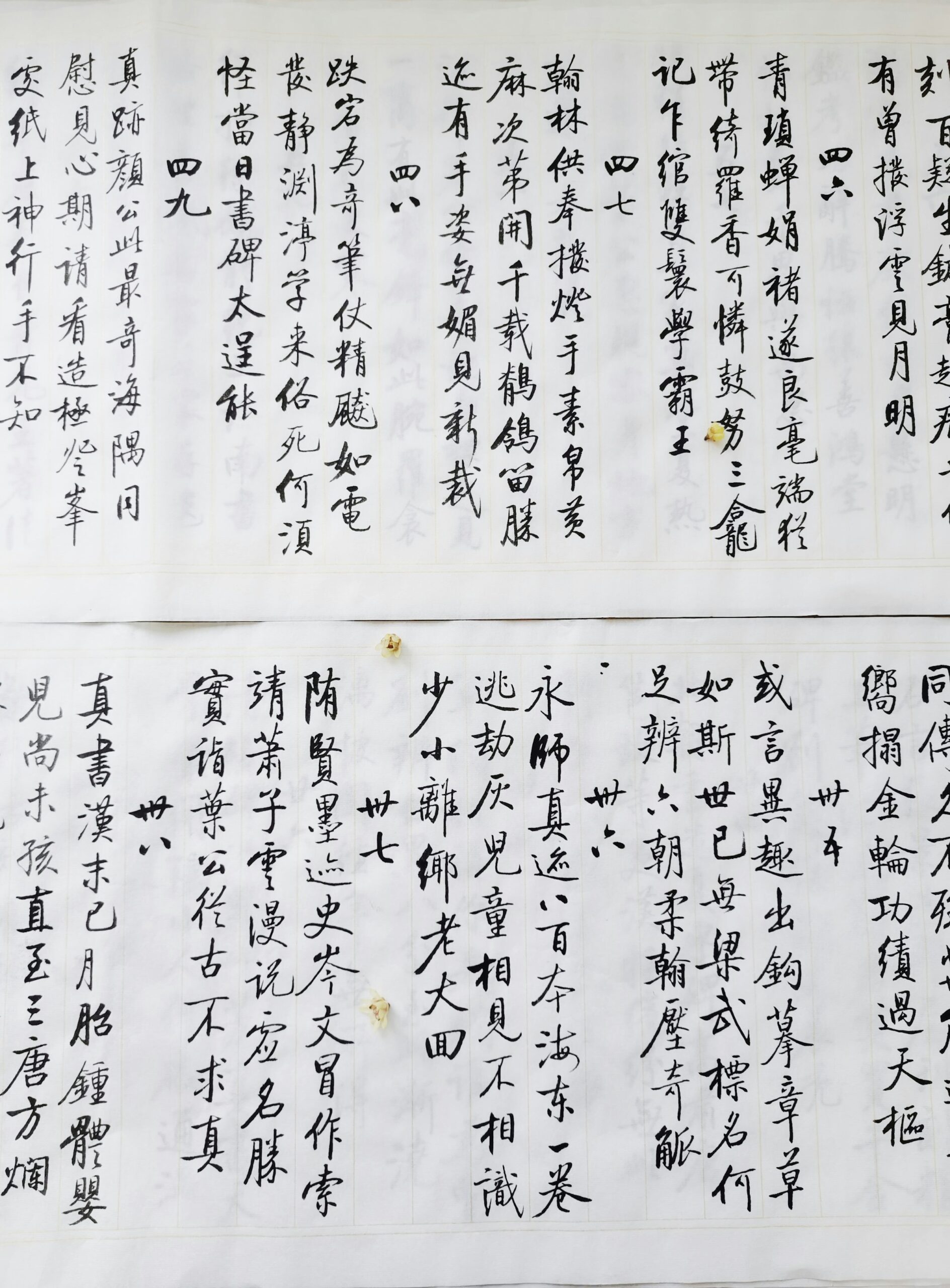When you first start learning Chinese, your handwriting will likely resemble what the locals charitably call 鸡爪子 (jī zhuǎzi) — “chicken scratch.” Your characters will be clumsy, unbalanced, and look less like ancient pictograms and more like a spider fell in an inkwell and had a seizure.
We’ve all been there. We cram stroke order, drill flashcards, and type pinyin so much that we forget these characters are meant to be written. And not just written, but brought to life.
If you truly want to connect with the Chinese language on a deeper level, put down your smartphone, step away from the keyboard, and pick up a brush. I’m talking about 书法 (shūfǎ) — Chinese calligraphy. It might seem like an intimidating, high-brow art form reserved for bearded sages on misty mountains, but trust me: it is the single most powerful tool for revolutionizing how you see, understand, and remember Chinese characters.
First, Meet the “Four Treasures of the Study” (文房四宝 – Wénfáng Sìbǎo)
Before you can write, you need to understand your tools. This isn’t your cheap ballpoint pen and a wrinkled napkin. This is a ritual. The “Four Treasures” are the traditional tools of the trade, and using them is half the experience.
| The Treasure | Chinese | What It Is | The Vibe |
| The Brush (笔 – Bǐ) | 笔 | Bǐ | A soft brush, typically of goat or wolf hair. It’s incredibly responsive; the slightest change in pressure or angle dramatically alters the line. It feels alive in your hand. |
| The Ink (墨 – Mò) | 墨 | Mò | Traditionally, a solid inkstick made from soot and binder. You grind it with a bit of water on an inkstone. The earthy smell is part of the magic. (Modern learners can use pre-made liquid ink, but you miss out on the zen of grinding). |
| The Paper (纸 – Zhǐ) | 纸 | Zhǐ | Special absorbent paper called Xuan paper (宣纸 – Xuānzhǐ). It’s designed to capture every nuance of the brushstroke, from a thick, bold line to a delicate, dry wisp. |
| The Inkstone (砚 – Yàn) | 砚 | Yàn | A stone slab with a small well for grinding the ink and holding the resulting liquid. It’s your palette, the foundation of your creation. |
Setting these out on your desk feels less like studying and more like preparing for a meditation session. Which, it turns out, is exactly what it is.

Why Bother? It’s More Than Just Pretty Writing
“Okay,” you’re thinking, “this sounds nice, but I just want to pass my HSK 3. How does this help?” Oh, in so many ways.
1. You Will Finally Internalize Stroke Order
You can drill stroke order rules all day, but they won’t truly stick until you feel them. With a brush, you can’t cheat. The flow of the character, the way one stroke naturally leads to the next, becomes physically obvious. The rules stop being abstract and become muscle memory. Writing a character in the wrong order with a brush feels awkward and clunky; writing it correctly feels like a fluid, graceful dance.
2. You’ll See Characters as Pictures, Not Puzzles
Calligraphy forces you to pay attention to proportion, balance, and composition. You start to see the radicals (the building blocks of characters) not as random squiggles, but as components with their own weight and personality. You’ll understand why the three dots of the water radical (氵) are positioned just so. You’ll see how the character for ‘tree’ 木 (mù), when doubled, becomes ‘woods’ 林 (lín), and when tripled, becomes a dense ‘forest’ 森 (sēn). The logic and beauty of the system reveal themselves.
3. It’s a Moving Meditation
Let’s be real: language learning can be stressful. Calligraphy is the antidote. It requires absolute focus. You have to control your breath, steady your hand, and clear your mind. The world melts away, and all that exists is you, the brush, the paper, and the character you are creating. It’s a profound mental break that actually reinforces your learning.
Your First Strokes: How to Get Started Without Fear
Intimidated? Don’t be. Nobody expects you to be a master on day one.
-
Start with the Basics: Don’t try to write a Tang Dynasty poem. Start by practicing the eight fundamental strokes that make up every single Chinese character. There’s a reason every student begins with the character 永 (yǒng – eternity); it conveniently contains all eight basic strokes.
-
Hack Your Way In with a “Water Paper” Set: This is a modern miracle for beginners. It’s a special cloth that you write on with just water. The strokes appear in dark black, as if you’re using ink. After a few minutes, the water evaporates, and the cloth is blank again, ready for more practice. No mess, no wasted paper, no intimidation. It’s the perfect training tool.
-
Watch and Learn: Find a teacher, a 老师 (lǎoshī), if you can. If not, YouTube is your best friend. There are thousands of videos demonstrating the proper form and flow. Watch how masters hold the brush, how they move their entire arm (not just their wrist), and how they bring a character to life.
Calligraphy is a journey, not a destination. It will teach you patience, focus, and a deep appreciation for the art form that is the Chinese written language. You’ll stop seeing characters as obstacles to be memorized and start seeing them as beautiful little sculptures of ink.
So go on. 拿起你的笔吧 (Ná qǐ nǐ de bǐ ba) — Pick up your brush! Your brain (and your handwriting) will thank you.
